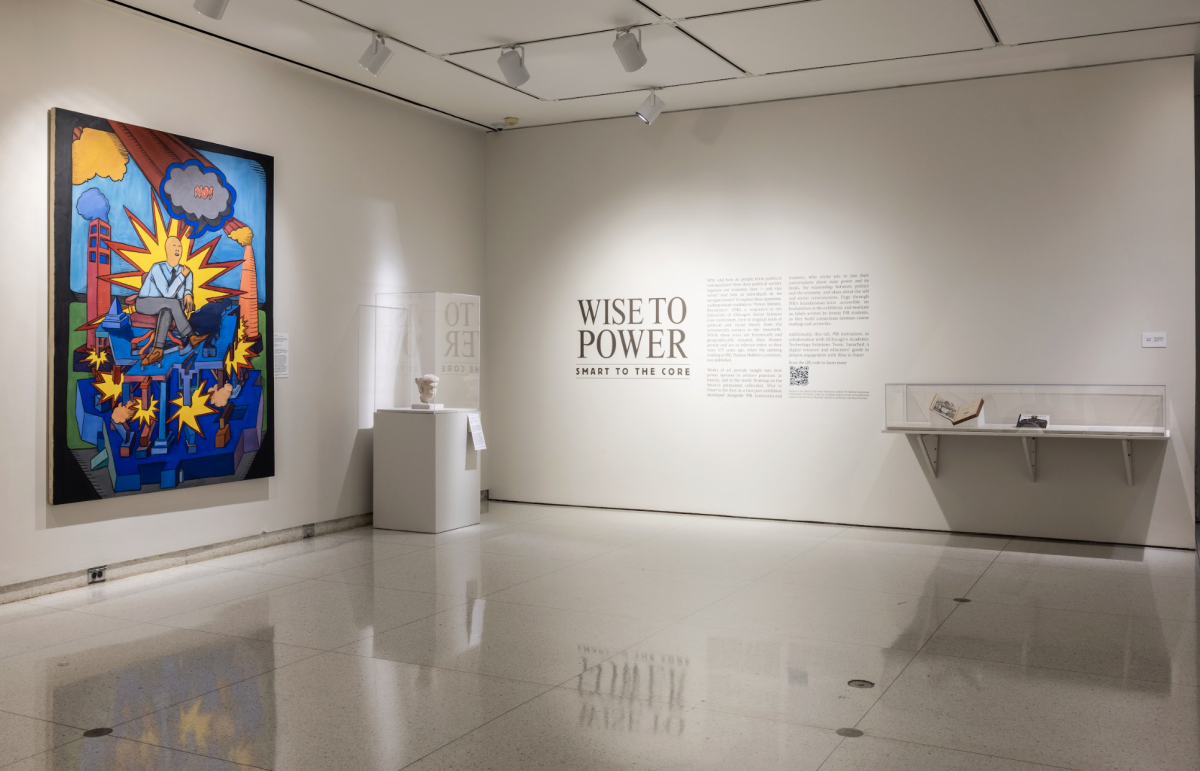I came into Richard Thompson’s Saturday night set at the House of Blues as a Thompson greenhorn. I’d heard his work, knew of his reputation as the dark-horse candidate for greatest living pop guitarist, but had dismissed him as overly subtle and excessively restrained. I could certainly appreciate him as an outstanding, literate singer-songwriter, but listened in vain for the hot solo that would answer the whispered question: “If Clapton is God, who is Richard Thompson?”
Thompson is something of an oddity. Many would argue that he is at least Clapton’s equal at rock guitar, but he’s hampered by a folk-geek persona that derives from Thompson’s origins in the ’60s Brit-folk group Fairport Convention, a group that was to Old English folk ballads what Bob Dylan was to the blues. Many of Thompson’s concerts are solo affairs with an acoustic guitar, which fans will passionately defend, but they don’t go far towards building a reputation for ass-kicking axe work. Nor do his albums; Thompson is a ridiculously skilled guitarist but is equally tasteful and restrained on his recorded work, and rarely cuts loose on an extended jam. Did I mention that he’s a devout Muslim?
When Thompson took the stage at the HOB, wearing leather pants, a tight black t-shirt, a black beret, and a baby blue Fender, I was immediately hopeful. This wasn’t the look of a man who had been introduced to me by NPR. This was the look of a man who wanted to tear things up for a couple hours. This was the tone he set with the opener, “Tear-Stained Letter,” an old chestnut with a rockabilly feel and call-and-response vocals that he turned over to the audience by the third chorus. The song was an able start, a good solid rock song to get the crowd warmed up and to show that Thompson was out to have a good time.
Much of the concert was surprisingly grounded in good-time American jams, such as “Two Left Feet” (off of the same album as “Tear-Stained Letter”), a Cajun-flavored novelty, and “Al Bowlly’s in Heaven,” a jazzy tribute to a World War II-era pop singer. Thompson chose to do the latter as more or less straight-up jazz, trading solos not only with multi-instrumentalist and long-time collaborator Pete Zorn (on alto sax), but also with his muscular rhythm section.
These cuts were impressively energetic, but simply foundational for the true rock gems that Thompson unleashed sporadically throughout the night. As the evening progressed, he started to weave dissonance and noise into his solos, adding electricity and bite to his virtuosity. Thompson’s soloing was matched in intensity by Zorn, who nearly broke his mandolin while trading riffs. Thompson unsurprisingly broke out the murder ballad/Afghan war lament “Shoot Out the Lights,” one of his most famous songs, but turned its hard minimalist feel into the show’s loud apex.
Zorn was a treat–a skinny, disheveled sideman with the look of a tenured professor and an array of instruments at his disposal (alto, tenor and baritone saxes, mandolin, acoustic guitar, and the biggest flute ever, not to mention a fine harmony voice). Thompson called on Zorn to provide a dirty baritone sax riff on “Tear-Stained Letter,” an Eastern-tinged alto sax on the new, goofily sinister “Pearly Jim,” and eerie mandolin on “Outside on the Inside,” one of three songs Thompson played from his upcoming The Old Kit Bag. Each time Zorn showed himself to be as musically flexible as Thompson and a strong soloist in his own right.
Inevitably, Thompson dismissed his bandmates for an intermission and played a brief acoustic solo set. At this point, Thompson’s famed music geekdom returned with a preview of a set he’s planning in October at the Old Town School of Folk Music called “1,000 Years of Popular Music.” The preview consisted of a song Thompson described as 15th-century Italian church music in “colloquial medieval Italian,” which he then translated before kicking into the song. The chord changes were clearly a good 400 years old, but Thompson’s rhythm line gave the song a contemporary feel.
Thompson closed the show with “Crawl Back (Under My Stone),” which on 1999’s Mock Tudor is a coolly bitter song with a winding guitar line. As on “Shoot Out the Lights,” however, Thompson extended and exploded it into an extended jam that veered between fluid, blues-based rock and harsher, caustic experimentation–if Clapton is indeed God, it’s because people want a New Testament one. He then returned for two brief, tempered encores that revolved around his popular favorites–a perfect acoustic rendition of “1952 Vincent Black Lightning,” in which Thompson highlighted his gift for intertwining rhythm and melody on the acoustic guitar, and rousing versions of “Wall of Death” and “A Man in Need.”
Of our group at the show, three were neophytes and three were long-time fans, and we all left staggered for different reasons. We’d caught Thompson on a remarkable night; one on which he was willing to cut loose and indulge his prodigious gift for electric and acoustic guitar. He’ll be coming back in October, but likely under a different guise, that of a virtuoso folkie and music historian. Those who made it to Saturday’s concert will be able to complete their impression of Thompson’s mercurial genius; those who missed it will have to be content to catch an artistic treasure in only one of his incarnations.








